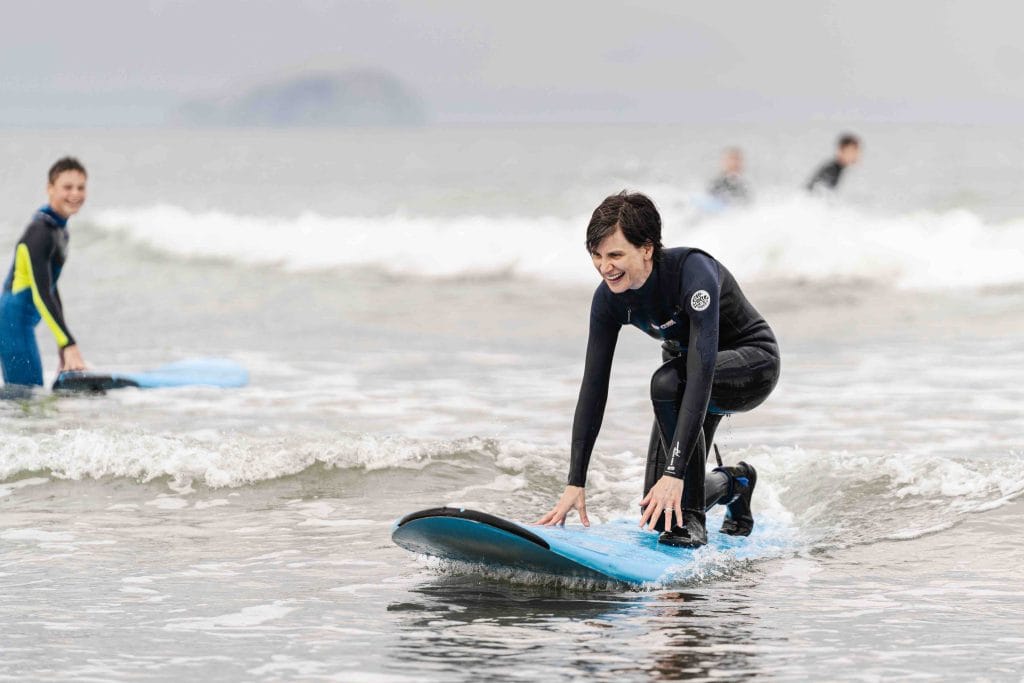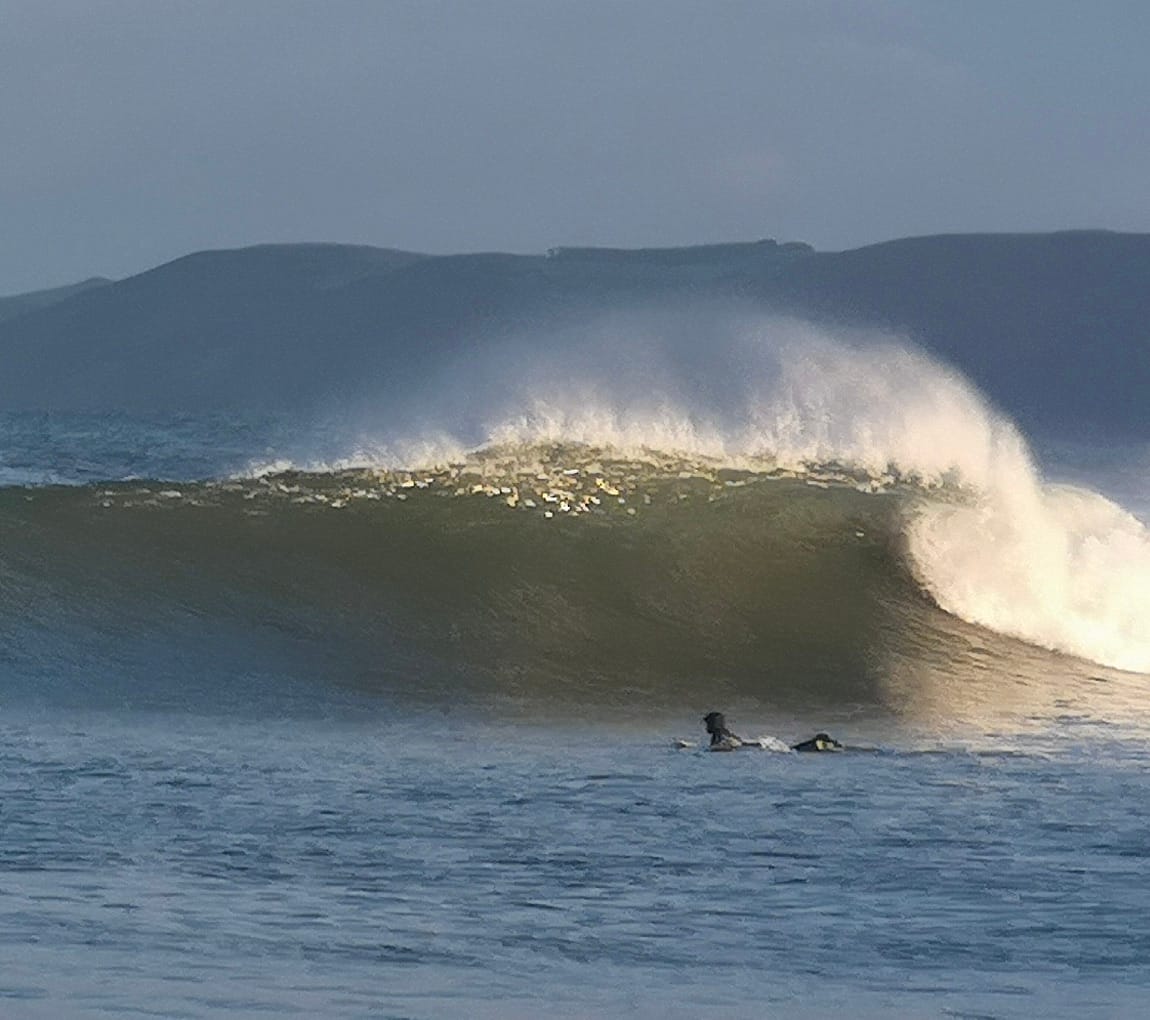If you do a quick search online you can find countless articles on wetsuits and the different types that you can buy. While this information is useful and we would recommend giving them a read through; it can be overwhelming with the choices available.
To save you time we have condensed this information down to specific things you need to know about getting a wetsuit to surf in Scotland.

When To Buy a Wetsuit
In the consumer oriented world, surfing seems like a breakaway and a chance to get back to nature and escape the daily grind. It is therefore a tough pill to swallow to realise just how expensive a hobby it can become and how much money you need to have just to get started.
While it is true that surfing equipment can be pricey, there are ways to reduce costs especially for your first wetsuits.
Below is our handy guide of how to go about doing this.
Buying New vs. Buying Second Hand
There are so many different brands of new wetsuits, all with advantages and disadvantages. Some are more stretchy, others more durable or warmer and others concentrate on environmental benefits or price.
From research we feel buying a new wetsuit comes down to personal feel for your body shape and what you want the wetsuit for? Is it a summer only watersports suit or a wetsuit that you can surf in year round? Is budget critical or are you looking to go as environmentally friendly as you can?
There are many different brands of wetsuit and each year each make new innovations. From our experience we would recommend C-skins suits as they are making positive moves environmentally and they make very good high end suits that all our instructors use. In the mid range both c-skins and Alder (our stock suits) make very affordable good quality suits that hit a good balance between warmth, durability, flexibility and price in a 5mm suit. However there are many other brands who also make good suits such as Patagonia, Rip Curl, O-Neil, Quicksilver, Xcel, Dakine, Billabong and many more to choose from not mentioned.
However if you’re new to surfing and don’t want to outlay £250-£500 for a new suit. Shops and surf schools will often announce second hand sales on their websites and social media so keep an eye out. Indeed Coast to Coast has two annual second hand sales – quality exhire 5mm wetsuits at a bargain price normally atleast half price (in the £75-125 bracket for kids/ adults 5mm). These sales are in June and September but we have both new and second hand suits year round. As a first step into watersports in Scotland this is a cheap way to get a quality suit that works in our waters.
Even damaged wetsuits can get a second lease of life with repair kits available and handy tutorials online, so no need to be put off by a wetsuit with a few scrapes. Many wetsuit manufacturers also offer repair services for a fee meaning even serious repair work can be carried out to save an old suit.
Sizing
If you have not bought a wetsuit before we would strongly recommend trying on a wetsuit before purchasing. This can be a huge advantage of buying a wetsuit through a local surf school as they will have the best wetsuits for the area and usually facilities for you to try on.
Buying through a surf school also means you can give the wetsuit a spin out in the water on a hire session before committing to a purchase.
Wetsuit Thickness
You may have seen a thickness rating on wetsuits as a series of numbers either written as two decreasing numbers (X/Ymm) or three decreasing numbers (X/Y/Zmm). These numbers denote the thickness of the wetsuit starting at the core and moving out to the extremities.
The thickness of your wetsuit depends on water temperature and personal choice. What you gain in thermal comfort you lose in flexibility and vice versa. Below is the wetsuit thickness guide and our recommendation for surfing off the coast of East Lothian.
Wetsuit Thickness Guide
Water Temperature | Wetsuit Thickness | Hood | Gloves |
18-24 | 1-2mm Shorty 3-2mm | No | No |
13-17 | 4/3mm 5/4mm | NO | NO |
9-12 | 5/4mm | YES | YES |
6-9 | 5/4mm 6/5mm | YES | YES |
0-6 | 6/5mm | YES | YES |
Water temperatures in East Lothian change on average from a low of 5 degrees in February, to a high of 18 degrees in August. Meaning if you followed the charts you could end up buying 3 or 4 different wetsuits for each season.
Instead, this is what we would recommend:
- Spring/Summer/Autumn – A 5/4mm wetsuit. This will be slightly thicker than needed in the height of summer but not uncomfortable. This is the thickness of wetsuits we use at the school and it works well year round. If you go good quality 5/4mm wetsuit it should be good year round.
- Winter – A 6/5mm wetsuit. For an experienced surfer that is comfortable in the elements at its coldest.
It’s worth also knowing that the best wetsuits are blind stitched, taped and glued and the super warm wetsuits have aerocore (insulation) inside the wetsuits and titanium paneling for warmth. Japanese rubber also tends to be the most flexible and there are genuine natural rubber choices for new wetsuits not far away from the general market. But this detail is best left for future posts….
If you are unsure and buying just now, don’t hesitate to get in touch with Coast to Coast for help.

Victoria Bain
Office Manager at Coast to Coast









